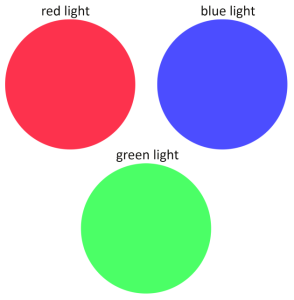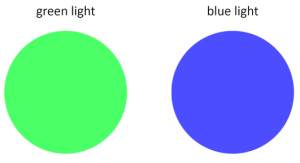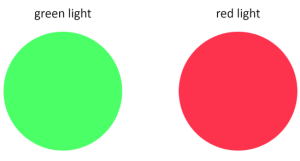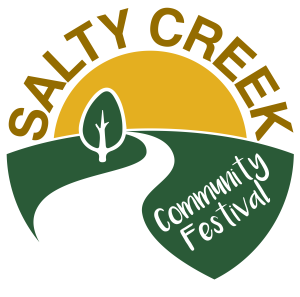Working with coloured lights
Hayden needs to create yellow backlighting for the stage, but he doesn’t have a yellow light! Help him figure out how he can make yellow light with the colours he has…

![]()
One of the festival organisers, Hayden, is running a rehearsal with some of the artists who will be performing at the Salty Creek Community Festival. One of the bands, The Salty Bees, want yellow backlighting for their act, so Hayden is looking for a colour filter for the stage lights. When he asks his colleague, Mia, for the yellow light filter, she says they don’t have one, but that he can still make yellow light by mixing other colours.
![]() Mia hands him the gel colour filters they have—red, green, and blue. When Hayden gives Mia a confused look, she explains that mixing light (additive colour) is not the same as mixing paint (subtractive colour) and that red, green and blue are the additive primary colours!
Mia hands him the gel colour filters they have—red, green, and blue. When Hayden gives Mia a confused look, she explains that mixing light (additive colour) is not the same as mixing paint (subtractive colour) and that red, green and blue are the additive primary colours!
Before Hayden can ask her how he can combine them to make yellow light, Mia rushes off to deal with a “hand sanitiser issue”. He decides to experiment and see whether he can figure it out on his own.

Read about Hayden’s trial and error process with mixing the coloured lighting and try to guess which colours the different combinations make. If you need some help, you can use the interactive mixer below to see additive colour mixing in action.
There are three floodlights on the stage. Hayden places a different coloured gel filter on each of the lights and points all three lights at the same spot on the back wall of the stage.

Multiple choice quiz (part 1) transcript
Hmmm. Mixing all three colours didn’t make yellow. Hayden decides to try some combinations of two colours.



Multiple choice quiz (parts 2, 3 and 4) transcript

Attribution: “Colour Theory: Understanding and Working with Colour”
by Dr Lisa Cianci, RMIT University Library is licensed under CC BY-NC 4.0
When Mia returns, Hayden tells her he’s figured out how to make yellow light, but only through trial and error.
Read Mia’s response.

“Lots of people are surprised to learn that mixing coloured light isn’t the same as mixing paint. With paint, the more colours you add to the mixture the darker it gets, but with light it’s the opposite—the more colours you add, the closer to white the light becomes! It’s science! But I’m not an expert—you should look into colour theory if you’re interested, particularly additive and subtractive colour systems.”
Hayden now feels better prepared to handle any future lighting requests on the stage. He’s also keen to learn more about additive colour and understand how mixing green and red could make yellow!
Having a better understanding of colour mixing, and colour theory in general, is useful knowledge for any activity or job that involves colour. Artists, designers, photographers, and fashion designers all use this knowledge in their work. Coloured lighting is important for event planners, stage technicians, and electrical engineers. Even the pixels on your computer or phone screen rely on the additive colour system.

- Hayden might be new to mixing coloured lighting, but he knows a lot about using colour to communicate effectively. Check out the advice he and Sammie give a volunteer about using accessible colour in design. (10 to 15 minutes)
Learn more
- Want to learn more about mixing colours and colour theory? Explore these pages on additive and subtractive colour to read explanations and quiz your knowledge.

